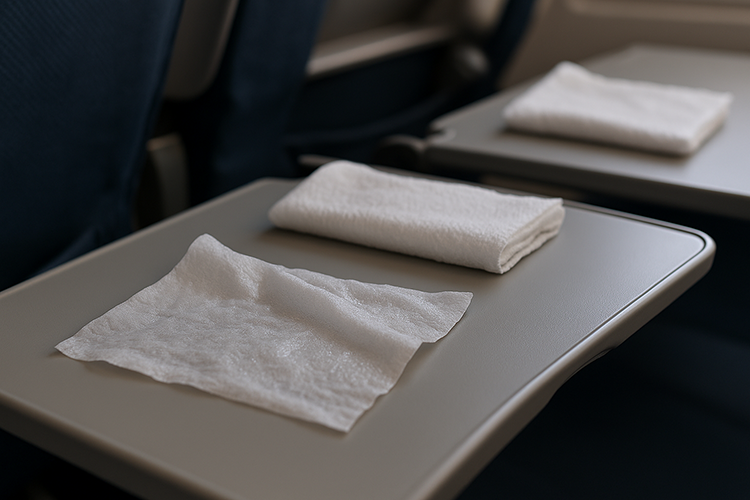2025-09-26
indicators

For years, the ritual was familiar. A flight attendant would hand over a warm or chilled towelette. Lately, though, passengers on European airlines—from local to European airlines—have been raising eyebrows, and noses. Instead of the clean hit of spirits, the scent has shifted toward something sharper, even bleach-like. These wipes are not new. Long before the pandemic, they were a small luxury in business or first class, offered as a refreshing touch before meals. What changed during COVID was their scale and purpose. Airlines began handing them to every passenger, repackaged as a hygiene measure, and often reformulated them with stronger disinfectant properties. What was once a comfort amenity became part of the visible theater of safety, reinforcing that cleanliness was now as important as champagne. Airlines rarely announce what goes into those little packets, but the answer lies in how inflight hygiene has evolved. Behind the curtain, aviation suppliers produce a whole range of wipes for carriers to choose from. Some are designed to evaporate quickly, leaving no trace; others linger on the skin, providing longer-lasting protection. These heavier-duty versions can leave behind a smell that feels more chemical than refreshing. Some airlines, or the companies that supply them, use quaternary ammonium compounds in place of alcohol. These substances last longer, giving extended antimicrobial protection. The trade-off is that they often leave a faint film on the skin and can cause irritation or allergic reactions in people with sensitivities. They don’t dry hands in the same way alcohol does, but the residue may feel sticky and, with frequent use, trigger rashes. For travelers with eczema or sensitive skin, these wipes can cause flare-ups, redness, or a lingering itch that undermines the intended comfort of the service. A local airline has not publicised any change to its onboard wipes, and other European carriers have kept quiet too. What is clear, however, is that airlines have flexibility in what they order. Procurement managers can switch suppliers or wipe types without fanfare, meaning travelers might encounter different smells—and different effects on their hands—on separate flights, even within the same fleet. The confusion is compounded by the wide variety of disinfectant technologies available on the market. From fast-acting solutions that vanish in seconds to surface treatments that linger, each comes with its own sensory footprint. That variety helps explain why one week your towelette might dry off in a flash, while the next it leaves a residue and a scent that clings. For frequent flyers, the takeaway is that wipes have become another part of the patchwork of inflight experience. The promise of a quick freshen-up remains, but the character has shifted, depending on what the airline ordered. For those who miss the old familiar smell, the simplest solution may be to bring along a personal stash of alcohol wipes and reclaim a little consistency at 30,000 feet.

